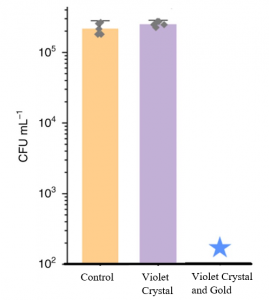Arachidonic acid is a fatty acid (a carboxylic acid with a long carbon tail) with 20 carbons and 4 double bonds. Counting from the end without the carboxylic acid group, the first double bond appears at the 6th position from the end, making this an omega-6 fatty acid.

Chemical structure of arachidonic acid. Credits: Wikimedia (Public domain) https://commons.wikimedia.org/wiki/File:AAnumbering.png
Arachidonic acid is incorporated into phospholipids in cell membranes. In the process of some cell signalling events such as the inflammatory cascade, it is cleaved from phospholipids by phospholipase A2 (PLA2), after which it can be modified into many signalling molecules including the prostaglandins (PGs), thromboxanes (TXs), and leukotrienes (LTs). These are the most well-known and well-studied of the metabolites derived from arachidonic acid; however, there are also many other compounds including the endocannabinoids (ECs), and several less understood groups such as the eoxins (EXs), lipoxins (LXs), epoxyeicosatrienoic acids (EETs), hepoxilins (HXs), isoprostanes (IsoPs), and isofurans (IsoFs). Some of these compounds are quite recent discoveries and thus have little information available about them. Nevertheless, many of these compounds have biological activity associated with the inflammatory response, either with anti-inflammatory or pro-inflammatory effects. The latter molecules are still under active investigation in order to better understand the way they mediate actions in the body. [1]
The actions of all these molecules are too numerous to explain here. Some of the most well-known actions are those of the prostaglandins. If you have ever taken NSAIDs such as ibuprofen or naproxen, you will have affected this system. These drugs inhibit the cyclooxygenase enzyme, a critical enzyme in prostaglandin synthesis. Prostaglandins have diverse effects such as acting as pro-inflammatory mediators and regulating smooth muscle contraction and relaxation (such as PGE2), or causing vasodilation and preventing platelet aggregation (such as PGI2, also known as prostacyclin). Other molecules in the cyclooxygenase pathway, such as thromboxane, promote clotting and causing blood vessels to contract (such as TXA2). [2] The leukotrienes, synthesized from the lipooxygenase pathway, are inflammatory mediators. Some asthma medications, such as montelukast and zafirlukast, block the actions of the leukotriene LTD4 which can help with the bronchospasms in asthma. [3]
The endocannabinoid system is also a growing area of interest. The compound N-arachidonoylethanolamine, also known as anandamide, is probably the most well-known compound. The effects of this compound include pain sensation modulation, reward processes in the brain, and immune system modulation. [4]
This is only a small peek at the world of arachidonic acid metabolites: there remains much to be explained outside of this blog post, and much to be discovered!
Sources:
[1] Wang, B., Wu, L., Chen, J., Dong, L., Chen, C., Wen, Z., Hu, J., Fleming, I., & Wang, D. W. (2021). Metabolism pathways of arachidonic acids: Mechanisms and potential therapeutic targets. Signal Transduction and Targeted Therapy, 6(1), 1–30. https://doi.org/10.1038/s41392-020-00443-w
[2] Ricciotti, E., & FitzGerald, G. A. (2011). Prostaglandins and inflammation. Arteriosclerosis, Thrombosis, and Vascular Biology, 31(5), 986–1000. https://doi.org/10.1161/ATVBAHA.110.207449
[3] Dempsey, O. J. (2000). Leukotriene receptor antagonist therapy. Postgraduate Medical Journal, 76(902), 767–773. https://doi.org/10.1136/pmj.76.902.767
[4] Lu, H.-C., & Mackie, K. (2016). An Introduction to the Endogenous Cannabinoid System. Biological Psychiatry, 79(7), 516–525. https://doi.org/10.1016/j.biopsych.2015.07.028

